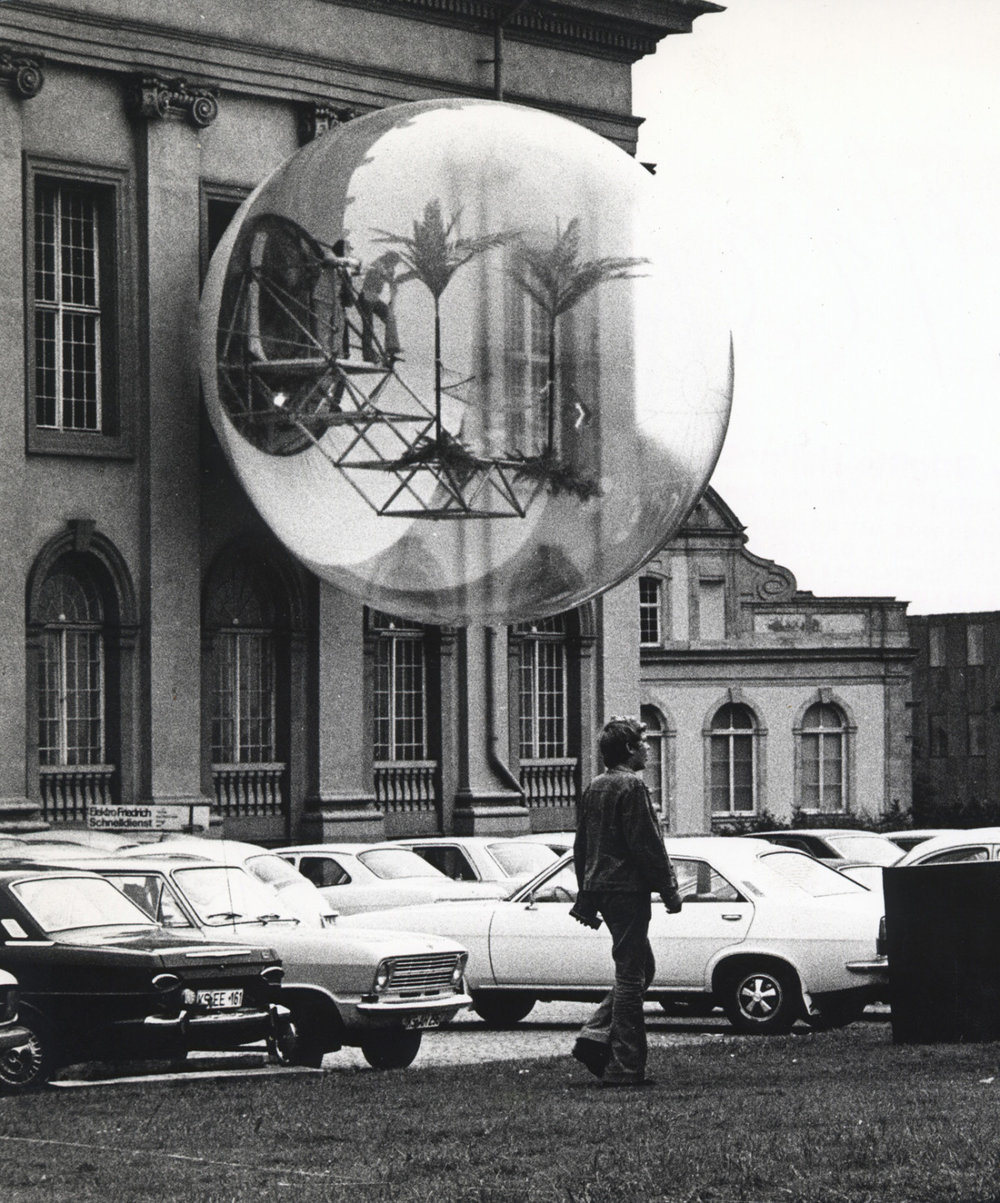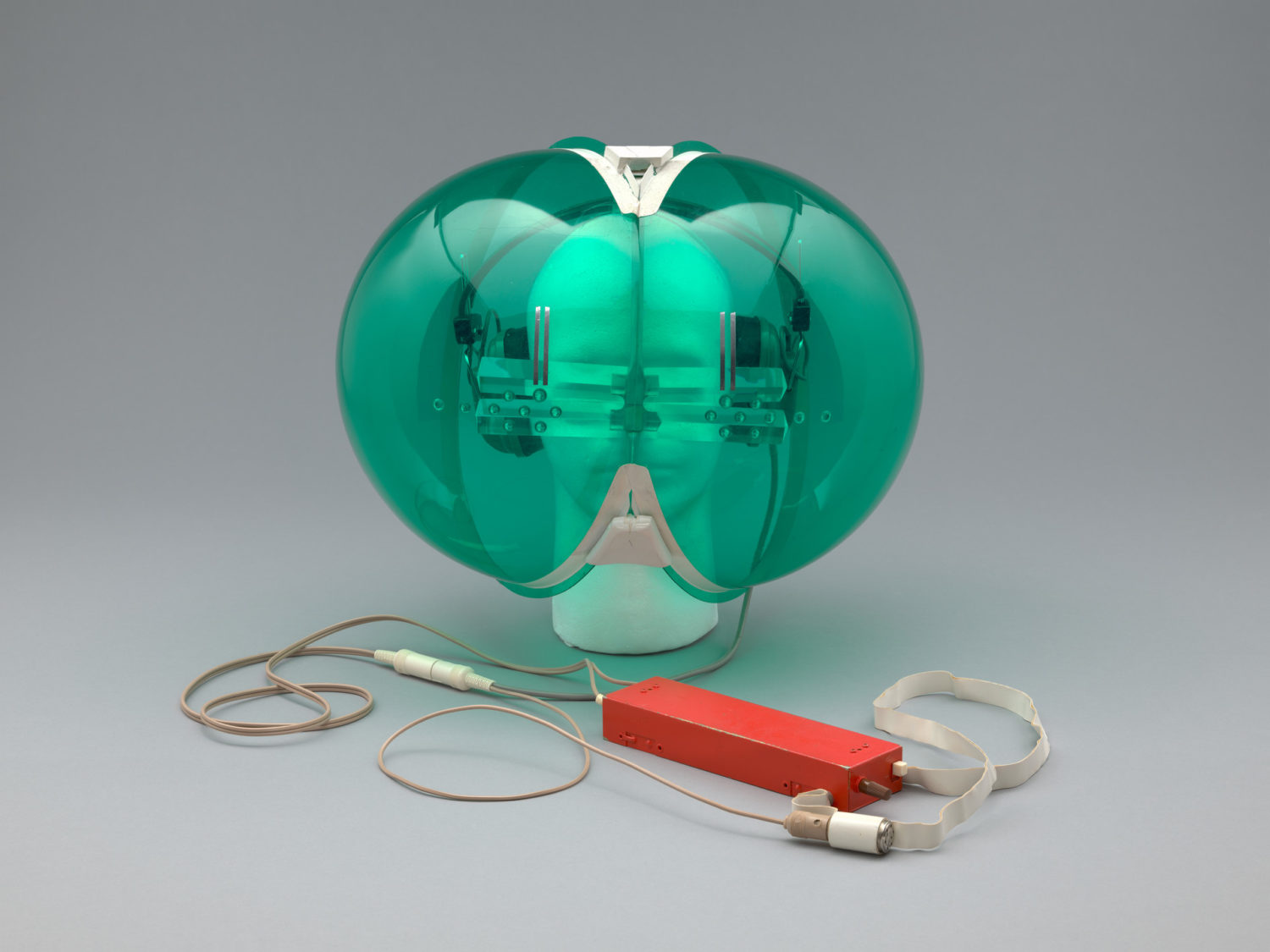From Transportive Prosthetics To Edible Architecture — The Story Of Haus-Rucker-Co
By Something CuratedAustrian collective Haus-Rucker-Co’s experimental architectural practice was most prolific during the late 1960s and 70s, spanning fantastical inflatable environments, futuristic prosthetics, and urban interventions all blurring the thresholds between art and design. The collective’s pneumatic architecture and wearable appendages endeavoured to change participants’ social and perceptual experiences. Founded in 1967, Haus-Rucker-Co aspired to extend people’s psycho-physical experiences through art and architecture. The Viennese collective was made up of Laurids Ortner, Günther Zamp Kelp and Klaus Pinter, later joined by Manfred Ortner. Their collaborative output explored the performative potential of architecture through installations and happenings.

The architects were captivated with the “inner space” as much as with the built environment. One of their best-known projects, Balloon for Two, comprised a transparent PVC membrane that inflated into a large bubble – an iteration of which was later installed for documenta 5 in 1972, entitled Oase No. 7. Supported by a steel rack, the sphere projected into the street from an existing building façade, capable of accommodating two people at a time. Psychedelia frequently entered Haus-Rucker-Co’s language and aesthetic, as typified by the group’s statement on the project: “Our balloons will help you to discover an unknown feeling of tranquility, of security, of relaxation. And love. We want to heighten your sensitivity. You will take a journey. Together with someone you love. Into inner space. Like Astronauts. Only an inward trip. You will attain a higher level of thinking and loving…”

Haus-Rucker-Co simultaneously explored the potential of architecture as a form of critique, while conceiving speculative designs for experimental environments and utopian cities. Taking their cue from the Situationist’s ideas of play as a means of engaging audiences, the group created performances where viewers became participants and could influence their own environments, becoming more than just passive onlookers. The different versions of the Mind Expander series, 1967-69, consisted of various helmets that could alter the perceptions of those wearing them, for example the Fly Head, a green-tinted polyethylene helmet with a set of stereo headphones and an eye-level interior split prism, disoriented the sight and hearing of the wearer to create an entirely new understanding of reality.

Working often with edible materials, Food City I at Walker Art Center was one of a series of performance events that Haus-Rucker-Co created for various cities in Western Europe and the US. In all of these events, different architectural models were crafted and then eaten by members of the public. On the occasion of the moon landing in 1969, for instance, the group wheeled a cake that resembled the surface of the moon into the streets of Vienna. In 1970, as part of their exhibition at the Museum of Contemporary Crafts in New York, Haus-Rucker-Co hosted a number of gastronomic events, including weekly dinners open to the public and a one-night performance in which a scale model of the Museum was offered up as dessert. Haus-Rucker-Co’s installations served as a critique of the confined spaces of bourgeois life, creating temporary, disposable architecture, while highlighting the senses we take for granted.
Bibliography:
Barbara Wiegand, ‘Pulsating Walls and Fleeting Ideas’, Deutschlandfunk Kultur, 2014
Günther Zamp Kelp, Luftschlosser: A Look At Haus-Rucker-Co / Post-Haus-Rucker, Spector Books OHG, 2020
‘Haus-Rucker-Co’, Spatial Agency
Lisa Hsieh, ‘The Edible, Playable, and Wearable Architecture of Haus-Rucker-Co’, Walker Art Center
Ross Elfline, ‘Common Ground: Haus-Rucker-Co’s Food City I and Collaborative Design Practice’, Walker Art Center
Feature image: Oase No. 7 (Oasis No. 7), Haus-Rucker-Co (Laurids Ortner, Manfred Ortner, Klaus Pinter, and Günter Zamp Kelp), 1972. Part of documenta 5: Befragung der Realität – Bildwelten heute (documenta 5: Questioning Reality – Image Worlds Today), Kassel, 1972. © 2020 Haus-Rucker-Co